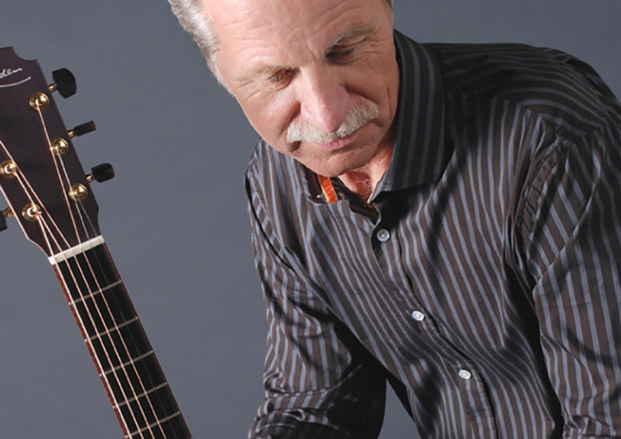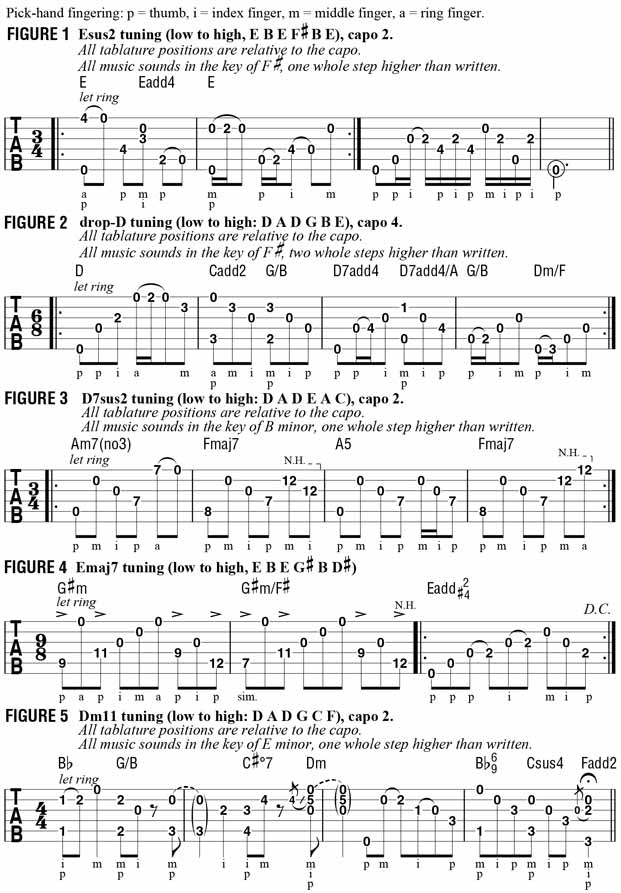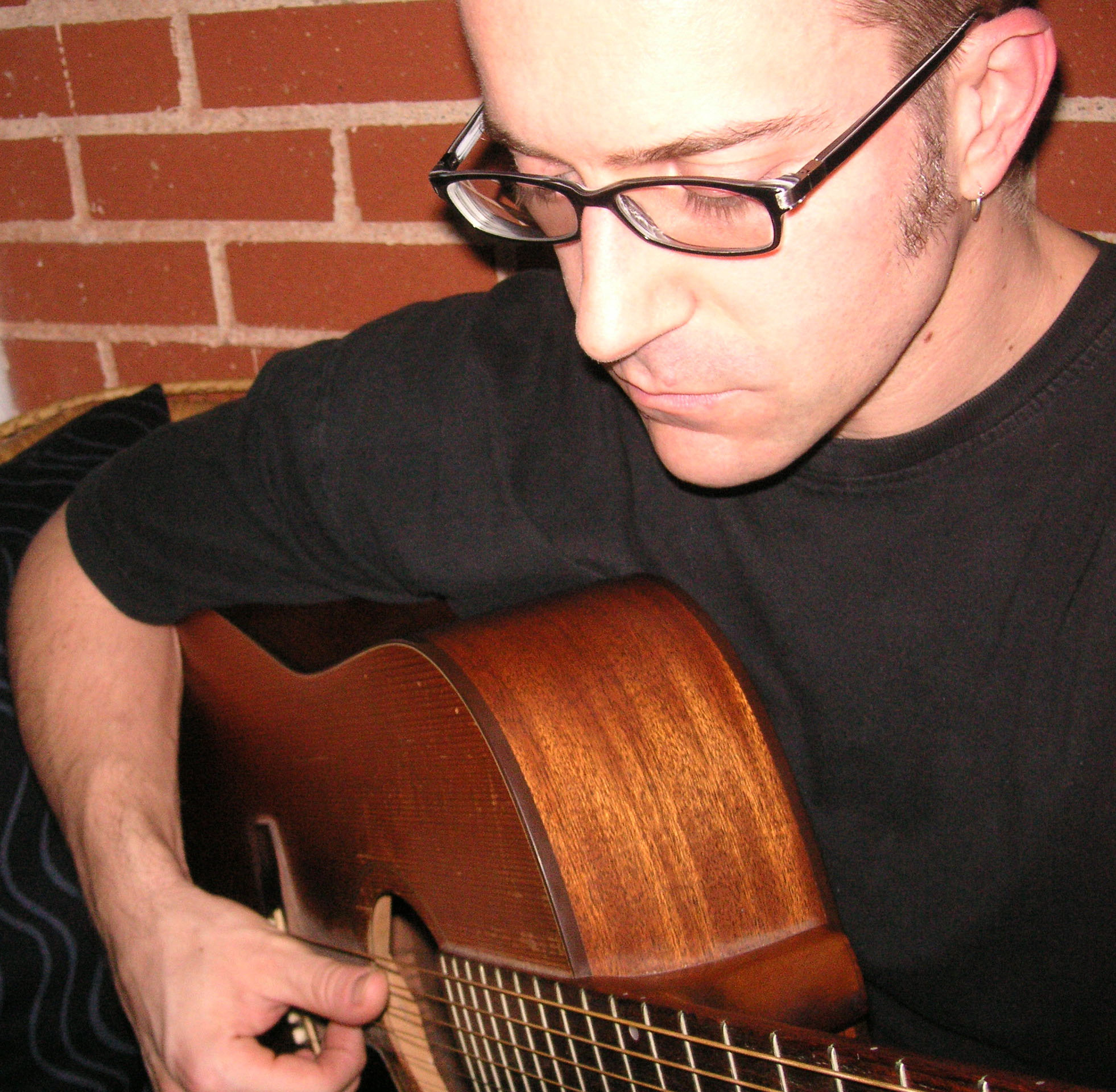Alex de Grassi’s Meditative Guitar Work

Though dubbing him a “new age” artist does him a disservice as a musician, Alex de Grassi was a pivotal player in the roster of Windham Hill Records (founded by Will Ackerman, de Grassi’s cousin), the label that put ethereal/meditative music on the map in the late Seventies with artists like pianist George Winston and, later, Yanni and Kitaro.
De Grassi’s stunning 1978 Windham Hill debut, Turning: Turning Back—an intricate and melodic solo steel-string record, ripe with progressive acoustic techniques and exotic tunings—became an inspiration for countless guitarists, including future label mate Michael Hedges (who wrote “A Song for Alex” for de Grassi).
While de Grassi’s early influences include British folksters John Renbourne and Bert Jansch, he later embraced classical, jazz and world music, as his dozen-plus solo album discography reflects. Let’s examine some prime de Grassi cuts, many of which are available on his recently issued Alex de Grassi: A Windham Hill Retrospective. Check degrassi.com for upcoming solo concerts and workshops.
De Grassi used a thumbpick and his bare fingers in his early solo work; now he picks with acrylic fingernail attachments (“fake nails”). He favors capos for both transposition (raising pitches to a higher, “sparkly” tonality) and to facilitate larger stretches—playing a passage up the neck, where frets are closer together.
With that said, dial in de Grassi’s Eadd2 tuning, capo 2, and try FIGURE 1, inspired by the atmospheric title track from Turning: Turning Back. To manage this passage, keep your fret-hand ring finger planted on the fourth string at the fourth fret (up from the capo) throughout, using your remaining fingers to juggle the bass and melody notes, picking as indicated.
De Grassi also “folks out” on his debut, as “Children’s Dance,” like FIGURE 2, conveys. This drop-D, capo 4 piece is a de Grassi rarity, as he uses more traditional chord shapes. There is, however, nothing “traditional” about his quickly rolling arpeggios and blazing hammered-on ornaments!
One of de Grassi’s most dynamic and emotive compositions, “Sleeping Lady,” from 1979’s Slow Circle, is coaxed from an odd D A D E A C tuning, capo 2. Akin to FIGURE 3, it mixes dramatic chords—voicings fretted high up the neck, with open strings ringing in their midst—and strategically placed harmonics. Keep your fret-hand index finger anchored at the fourth string’s seventh fret, using your pinkie to reach the 12th-fret harmonics.
“Midwestern Snow,” which informs FIGURE 4, also appears on Slow Circle. Its Emaj7 tuning and relentless triplet fingerpicking will certainly pose a technical challenge! Played mostly in ninth position, bar 1’s tricky fingerpicking should be honed before tackling the remaining measures; bar 2 is the same pattern and chord shape, only the fret hand’s index finger stretches back to the seventh fret.
We’ll close this lesson with a nod to the title track to de Grassi’s 1983 album Southern Exposure. The tune, like FIGURE 5, features a more “world music” feel—too groovy for the “new age” marketing term! Playing in a quasi Dm11 tuning, capo 2, de Grassi creates custom shapes that outline a sophisticated jazz chord sequence, a puzzle of bass notes moving up in half steps along fifth string and a somewhat “bluesy” melody.

Get The Pick Newsletter
All the latest guitar news, interviews, lessons, reviews, deals and more, direct to your inbox!
A singer-songwriter/multi-instrumentalist/film composer, Musician's Institute instructor, and author of 50+ transcription/instructional books, Dale Turner is also Guitar World's "Hole Notes"/"Acoustic Nation" columnist, and the former West Coast Editor of Guitar One magazine. Some of Dale’s old, weird, rare, and/or exotic instruments are featured in his score for WEEDS, the first animated short completed within the Filmmakers Co-op at Disney Feature Animation. His most recent CD, Mannerisms Magnified, was praised by Guitar Player magazine for its "Smart pop tunes that are crammed with interesting guitar parts and tones ... Like what the Beach Boys might do if they were on an acid trip that was on the verge of getting out of control. Yeah!"
“There are so many sounds to be discovered when you get away from using a pick”: Jared James Nichols shows you how to add “snap, crackle and pop” to your playing with banjo rolls and string snaps
Don't let chord inversions bamboozle you. It's simply the case of shuffling the notes around








![Joe Bonamassa [left] wears a deep blue suit and polka-dotted shirt and plays his green refin Strat; the late Irish blues legend Rory Gallagher [right] screams and inflicts some punishment on his heavily worn number one Stratocaster.](https://cdn.mos.cms.futurecdn.net/cw28h7UBcTVfTLs7p7eiLe.jpg)


